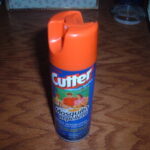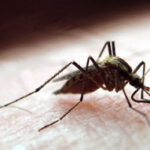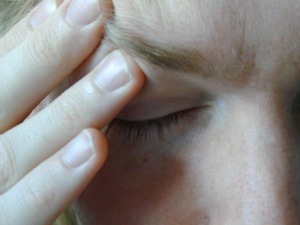Mosquitoes, ticks, black flies and other insects are a frustrating part of nature. There is nothing more nerve racking than looking down to see your child’s tender skin covered in mosquitoes. Before you reach for the insect repellent to keep the pesky insects away, make sure that you know the facts about DEET.
DEET, diethylltoluamide, is an ingredient in many United States-manufactured insected repellents. When you apply DEET to your child’s skin, more than half of the DEET is absorbed into your child’s skin and rapidly enters the bloodstream. It is easily absorbed into the skin but hard to get out. Portions of the chemical will be stored in your child’s skin for months. Actually, some of the DEET may never be completely eliminated. Frequent use can cause toxic effects and the continued use of DEET has been linked to severe posionings that have caused brain damage in children. More than five thousand poisonings are reported each year, mainly in children under the age of six. DEET can also cause irritability, lethargy, dizziness, headaches, nausea, brain swelling, cardiorespiratory arrest, skin rashes that scar, muscle cramps and convulsions.
DEET repellents come in a range of concentrations-from 7 to 100 percent by volume. Children should never be exposed to more than 10% DEET. Usually products with under 10% DEET will be designated for the use of children. If you must use DEET as a repellent, choose wisely and safely. Under NO circumstance should you expose your child to concentrations higher than 10%. There is simply no need to risk your child’s health when there are methods that are equally effective and safer for your child’s health.
Many parents risk the hazards of DEET to prevent Lyme Disease and mosquito bites. However, both of these can be easily prevented without the use of this toxic chemical. To prevent Lyme Disease, examine your child’s skin every twelve hours and gently remove any ticks with tweezers. It takes about twenty-four hours for a tick to pass the diesease-causing bacteria from its body to your child’s. Some parents will also soak their child’s clothes in DEET solution and leave it to dry because the clothing will hold the repellent properties. After the clothes dry, they will tie them around the child’s ankles and wrists to ward off the bugs. This is not recommended because you are still exposing your child to the fumes and the DEET could come into direct contact with your child’s skin. If you do decide to use this method as an insect repellent, choose a very low-percentage DEET product-10% or less.
Because mosquitoes are at their peak at dusk and dawn, time your activities so that children can play and not be exposed to the mosquitoes. Dress your kids, and yourself, in long-sleeved clothing if you will be exposed to mosquitoes, ticks and other pesky insects. If you will be wearing just one layer, make sure that it is a fabric that mosquitoes can not bite through. Denim is a good choice. Tuck your child’s pants into their socks to avoid bites around the ankles. You can also use mosquito netting added to a hat to keep the insects off of your face. Tightly woven clothing can be just as effective against mosquitoes, ticks and insects as DEET. Baby oil is 100% safe and 100% effective against black flies. The flies will drown before they bite.





